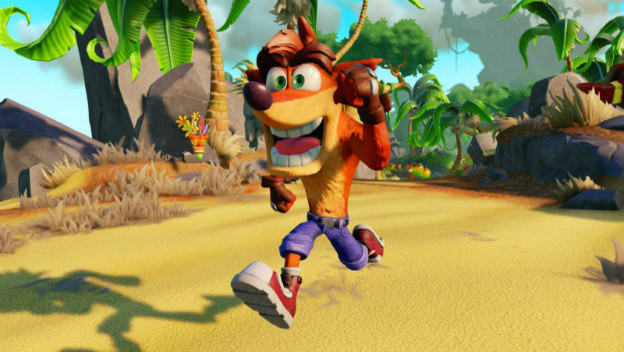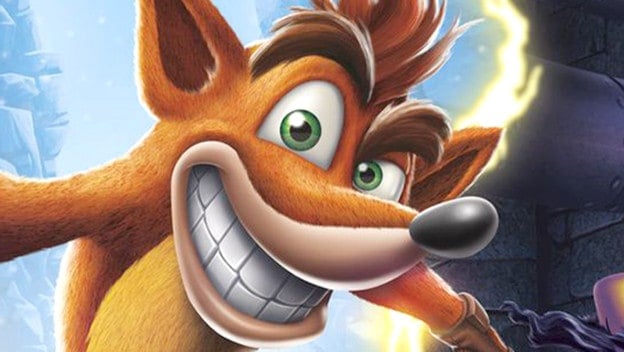I wasn’t sure how this was going to work out to be honest, but the early numbers are in and Crash Bandicoot: The N.Sane Trilogy is a huge success. There’s talk about it being the best-selling, single-format release since Horizon: Zero Dawn shipped. That’s pretty huge for what some may simply see as a budget release of old games. I was certainly skeptical, not having really been a part of the Crash Bandicoot craze growing up. But here I am seeing this news and getting my gears turning about how this Matters in the grand scheme of video games. I think it’s a pretty telling example of not only how the current market supports nostalgia releases, but also how when a publisher has good old IP, if it treats it like it has value, then the people with treat it like it has value.
There are a few recent examples of either side of this train of thought we can look at. Capcom’s recent collections are a good start. When Mega Man Legacy Collection was on its way, people weren’t sure what to think. The Mega Man series was already available on Nintendo’s Virtual Console, as well as older collections with much more bonus content on previous generation consoles. But this new release was fairly reasonably priced and pushed by Capcom, so people picked it up. It ended up doing really well, as not only was the port job by Digital Eclipse incredible, getting closer to the NES originals than anyone has before, but the museum content was amazing, with scans of original box art and concept art.
Capcom later followed that release up with the Disney Afternoon Collection, a port by the same team with the same features. The dedication to and love for preserving game history and treating these games as such is palatable when checking the game out; Digital Eclipse’s Frank Cifaldi even told me on Twitter once he personally purchased a copy of one of the DuckTales Game Boy games to get a complete collection of box scans in. This collection was successful too (albeit with no retail release), and now Capcom is bringing out a second Mega Man Legacy Collection, this time an internal Capcom project.
On the opposite side of these lovingly crafted releases, we have dozens of low-budget ports or remasters that plagued virtual marketplaces such as Xbox Live or the PlayStation Network. Games like Rocket Knight, Turtles in Time, or recent efforts like Sega Forever have all been examples of cheap releases rushed out with minimal fanfare or effort. Things like Virtual Console releases are also teetering on the line of poor quality, low value ports of classic games. The problem with these releases is they train players to not consider these games worth money, but they’re still in demand so publishers will dump them out without spending money on them, then charge way less than what they’re worth.
This ends up making these games disposable in everyone’s mind. Then they come out with issues not present in their original releases, from sound issues to off-kilter resolutions to poor frame rates. It’s a vicious cycle of low effort, low cost and low reward reissues of games that should be considered important parts of history, but instead they’re installed on crappy, fake Sega Genesis or Atari boxes that can’t even hold save data or run a game properly. Or they’re lost forever on a digital marketplace, doomed to be delisted or sit unplayed, devaluing the IP because no effort was made beyond getting something out to cash in on a craze.

Games like the Mega Man Legacy Collection and Crash Bandicoot N. Sane Trilogy are an effort to circumvent this horrible fate for games entire swaths of people still have fond memories of. Sure, they’re different kinds of releases, Crash is a remake and Mega Man is a series of well-curated ports, but they’re both treated as Important, with a capital “I,” by the people making them. Consumers take notice of how games are presented and emphasized by the people creating and selling them. The Crash collection is a big deal because Activision and Sony have presented it as such. Same with the Capcom collections. People were like, “Do we actually want this?” and Capcom responded with, “Hell yeah you do, and here’s why.” It worked.
It’s okay for old games to cost more than a few dollars a pop. If the publisher is able to charge more, the publisher is able to put more effort into how they’re presented. The release can go from a throwaway port on a digital service, to a retail release with bonus features and other goodies. This was a concept that was explored some in the past, abandoned entirely last generation during the marketplace goldrush, and now slowly being embraced after a few breakout hits. If this keeps up, we may see even more interesting, well-curated collections in the future. Publishers still need to be careful with what IP they choose (nobody is going to spring for a boutique Bubsy release, for example), but if the care and respect for historic works continues, the current generation could be a hallmark time for gaming past.
